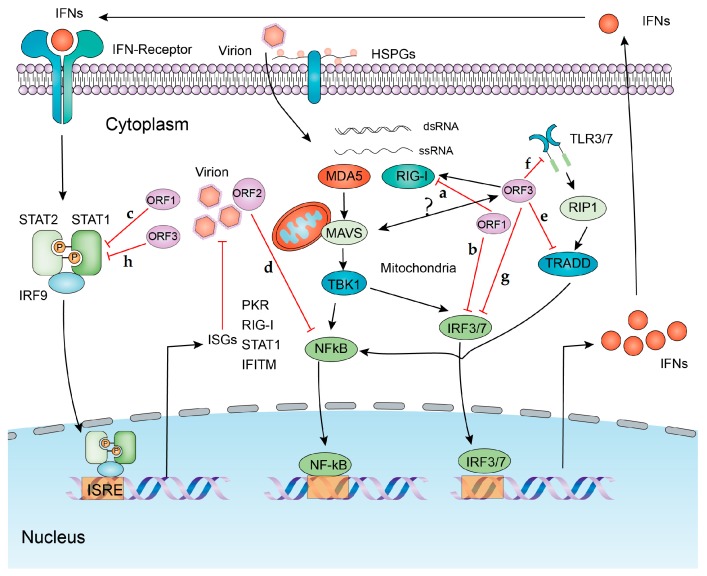Figure 1.
The interplay of the interferon (IFN) antiviral signaling and HEV. Upon infection, HEV is recognized by the host pattern-recognition receptors, including MDA5, RIG-I, TLR3, and TLR7. This triggers their downstream cascades, including IRF3 and NF-κB, leading to the production of IFNs. Subsequently, IFN binds to the receptors and results in phosphorylation of STAT1 and STAT2. Phosphorylated STAT1 and STAT2 form a complex with IRF9 (ISGF3). This complex translocates to nucleus and binds to IFN-stimulated response element (ISRE) to induce the transcription of antiviral IFN-stimulated genes (ISGs). RIG-I and MDA5 have been identified to inhibit HEV replication. On the other hand, HEV has evolved strategies to evade host IFN response. ORF1 inhibits phosphorylation of STAT1 and IRF3 as well as deubiquitination of RIG-I. ORF2 inhibits activation of NF-κB. ORF3 blocks phosphorylation of STAT1 and IRF3, but also has been reported to induce IFN production through increased activation of RIG-I. a, b, c, d, e, f, g, and h indicate the important interactions between viral proteins and host factors.

